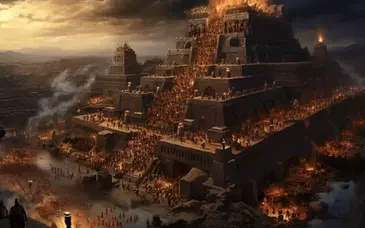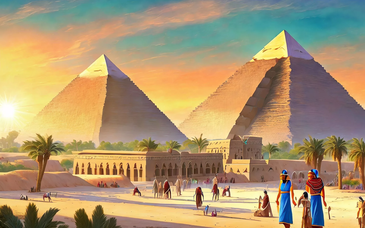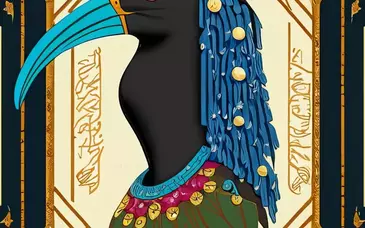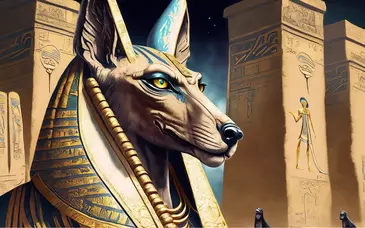The Egyptians' staple food was bread.
It was made from barley and emmer wheat, their most common crops. Bread was usually baked in a conical mold that was placed over an open fire. There were also dome-shaped ovens where net loaves of bread were baked by placing them against either the hot interior or exterior of the dome. The main beverage of ancient Egypt was beer, but the frequent depictions of grape arbors on tomb walls and the numerous wine vessels found throughout Egypt indicate that wine was also popular. However, only the nobility could afford to drink wine on a regular basis.
Numerous varieties of fruits and vegetables were grown in irrigated gardens. Fruits included figs, grapes, plums, dates, and watermelon. Vegetables included beets, sweet onions, radishes, turnips, garlic, lettuce, chick peas, beans, and lentils.
The Egyptians ate a variety of meat, fish, and fowl. Beef, mutton, pork, and wild game such as hyenas were part of their diet. Fowl included domestic geese and pigeons and a wide variety of wild birds--herons, pelicans, cranes, wild ducks, and wild geese. The Nile supplied many kinds of fish, including catfish, mullet, bolti, and perch.



